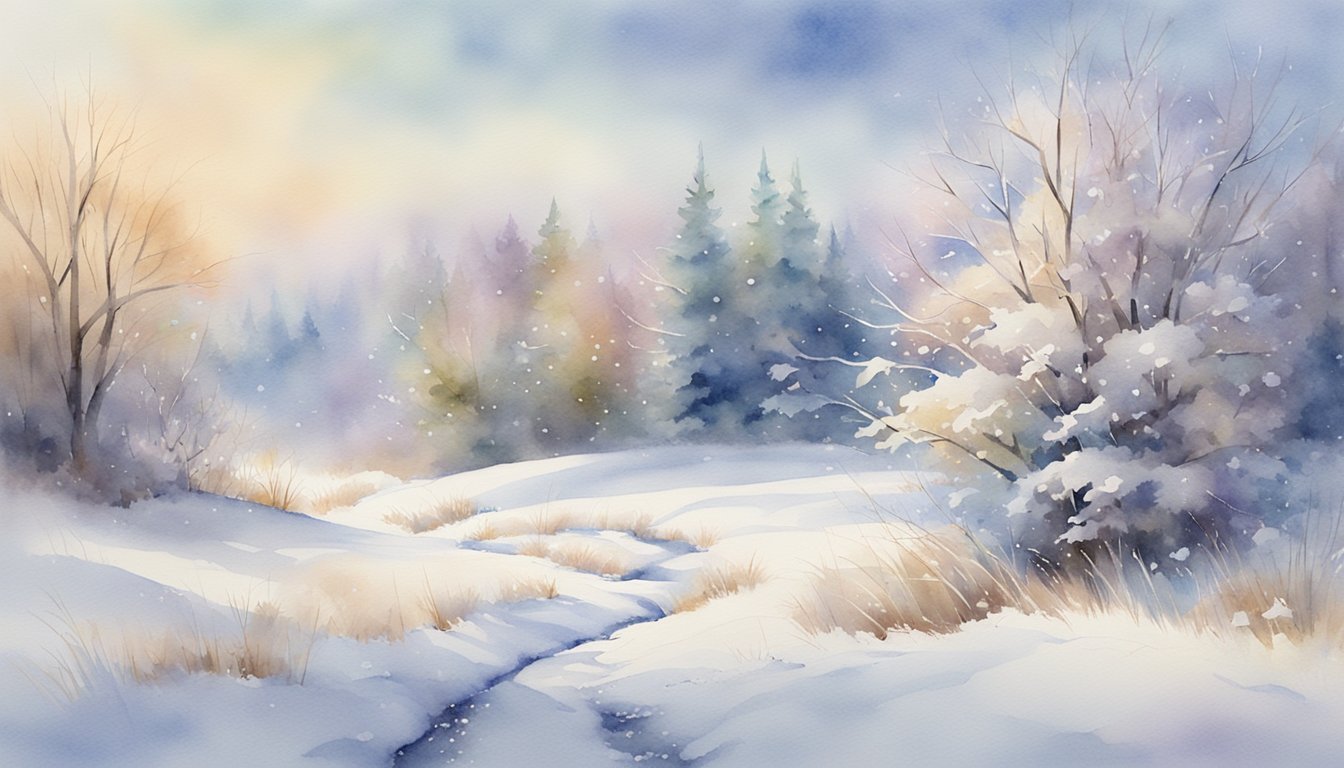Understanding Snowflake Imagery
Capturing the delicate and intricate designs of snowflakes requires a blend of scientific understanding and technical photography skills. By considering both the structure of snowflakes and the necessary photography techniques, one can produce stunning snowflake images that reveal the beauty of these ice crystals.
The Science of Snowflakes
Snowflakes are unique ice crystals that exhibit hexagonal symmetry, and despite their seemingly infinite variety, they all hold this characteristic shape due to the molecular structure of water. The journey of a snowflake begins high within the clouds when water vapor freezes onto a particle, and as it falls, the changing humidity and temperature sculpt its form. Each snowflake’s unique path gives it a distinctive pattern, which can be fascinating as no two snowflakes are exactly alike. This diversity makes snowflake imagery not only appealing but also scientifically significant, offering a glimpse into the atmospheric conditions that prevailed during their formation.
Snowflake Photography Tips
Photographing snowflakes can serve as a wintertime adventure and an exercise in patience and precision. Successful snowflake photography relies on a few key factors: proper equipment, the right settings, and a bit of timing. It typically involves using a macro lens to capture the fine details of the snowflakes. Camera settings are crucial; a narrow aperture, such as f/8 to f/16, provides sufficient depth of field, while a low ISO minimizes noise. The choice of background color and material can make a significant difference in the contrast and visibility of the snowflake’s intricate designs. A dark mitten serves as an excellent background, as it doesn’t retain heat, allowing snowflakes to retain their shape. Adequate lighting is also paramount—utilizing flash or reflective surfaces can illuminate the complex structures of snowflakes, giving depth and clarity to the image. Snowflake photography requires the right conditions, and a snowfall with relatively dry flakes will often yield the best results.
Accessing Snowflake Pictures

Accessing stunning snowflake pictures has never been easier, with a wealth of free resources available for download, use in projects, or as beautiful wallpapers for your devices.
Sources for Free Snowflake Images
For those looking to find free snowflake images, websites like Pixabay offer an extensive collection. Users can choose from over 4,000 snowflake photographs, which can be downloaded at no cost. These images are available in various resolutions, suitable from HD to 4K quality, ensuring clarity for any use.
Using Snowflake Images in Projects
Snowflake images can greatly enhance any project, from academic presentations to design portfolios. When using these images, it’s key to ensure they are permissible for commercial use if the project demands it. Many of the images found for free online, such as those on Pixabay, are licensed for free commercial use, making them a fantastic asset for a variety of projects.
Snowflake Wallpapers
Transforming a desktop or smartphone display into a winter wonderland is simple with snowflake wallpapers. The crisp, intricate designs of snowflakes make for visually appealing backgrounds. Users can find high-resolution snowflake images specifically curated for use as wallpapers, which are readily available for download.

